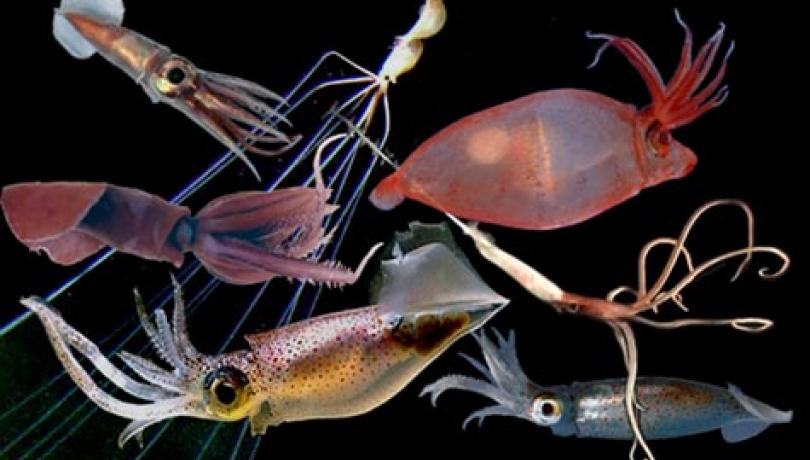According to a new ICM-CSIC study, meso- and bathypelagic ecosystems hide a large number of cryptic species, which would have led to erroneous assessments of diversity in this type of difficult-to-access environments.

A new study led by the Institut de Ciències del Mar (ICM-CSIC) in collaboration with the University of Galway (Ireland), the Okinawa Institute of Science and Technology (Japan) and the University of Hiroshima (Japan), has revealed that the biodiversity of meso- and bathypelagic ecosystems -located between 200 and 4000 meters deep- could be much greater than previously thought. Specifically, the work, recently published in the journal Integrative & Comparative Biology, explores the genetic diversity of oceanic squids, one of the least known groups of cephalopods.
According to the conclusions, this is due to the existence of a high cryptic diversity, i.e. the presence of morphologically very similar or identical species that are, in fact, distinct species. However, the authors caution that there are also more complex cases where it is unclear whether the observed differences are due to recent cases of speciation or to a large population structure among members of the same species.
"In the current context of biodiversity loss due to anthropogenic activity, having a good knowledge of the real diversity of the planet is key to correctly assess the extent of this loss," notes Fernando Ángel Fernández-Álvarez, the lead author of the study.
Cryptic diversity
Cryptic diversity is probably the greatest problem faced by the scientific community in understanding biodiversity, as it causes many species to go unnoticed. This is especially important in inaccessible environments, such as meso- and bathypelagic ecosystems, where the squid species studied live. These data are also essential for assessing the impact of future mesopelagic fisheries. Given that mesopelagic ecosystems represent the greatest amount of unexploited oceanic biomass, having a good knowledge of their biodiversity is, according to the study authors, "vital".
To carry out the study, the team used genome skimming, a low-resolution genome sequencing technique that allows the assembly of long regions of the genome that are overrepresented, such as the mitochondrial genomes or the nuclear ribosomal cluster. Likewise, following the DNA barcoding methodology, a comparative genetics technique, they were able to give a global context to the data.
"The combination of the two techniques has allowed us to characterize previously unnoticed taxonomic diversity and compare different molecular markers, which could have future applications for detecting the presence of these species with environmental DNA," says Louise Allcock of the University of Galway.
In total, about 150 specimens of 16 Atlantic oceanic squid species were sequenced from samples collected in different campaigns covering international Atlantic waters from approximately Brazil to Iceland, and from Ireland to Canada, as well as the Mediterranean Sea. Most of the specimens were subsequently deposited in the ICM-CSIC Marine Biological Reference Collections, so that these DNA sequences are permanently linked to a physical specimen and their identification is guaranteed.
For future research, the team will delve deeper into the study of cryptic diversity cases in order to name and know the different cryptic species.
"It is important to know the diversity of mesopelagic fauna on a global scale and also the genomic traits involved in their speciation. In this way we hope to be able to continue discovering species from these ecosystems through international collaborative projects," concludes Gustavo Sánchez, from the Okinawa Institute of Science and Technology.